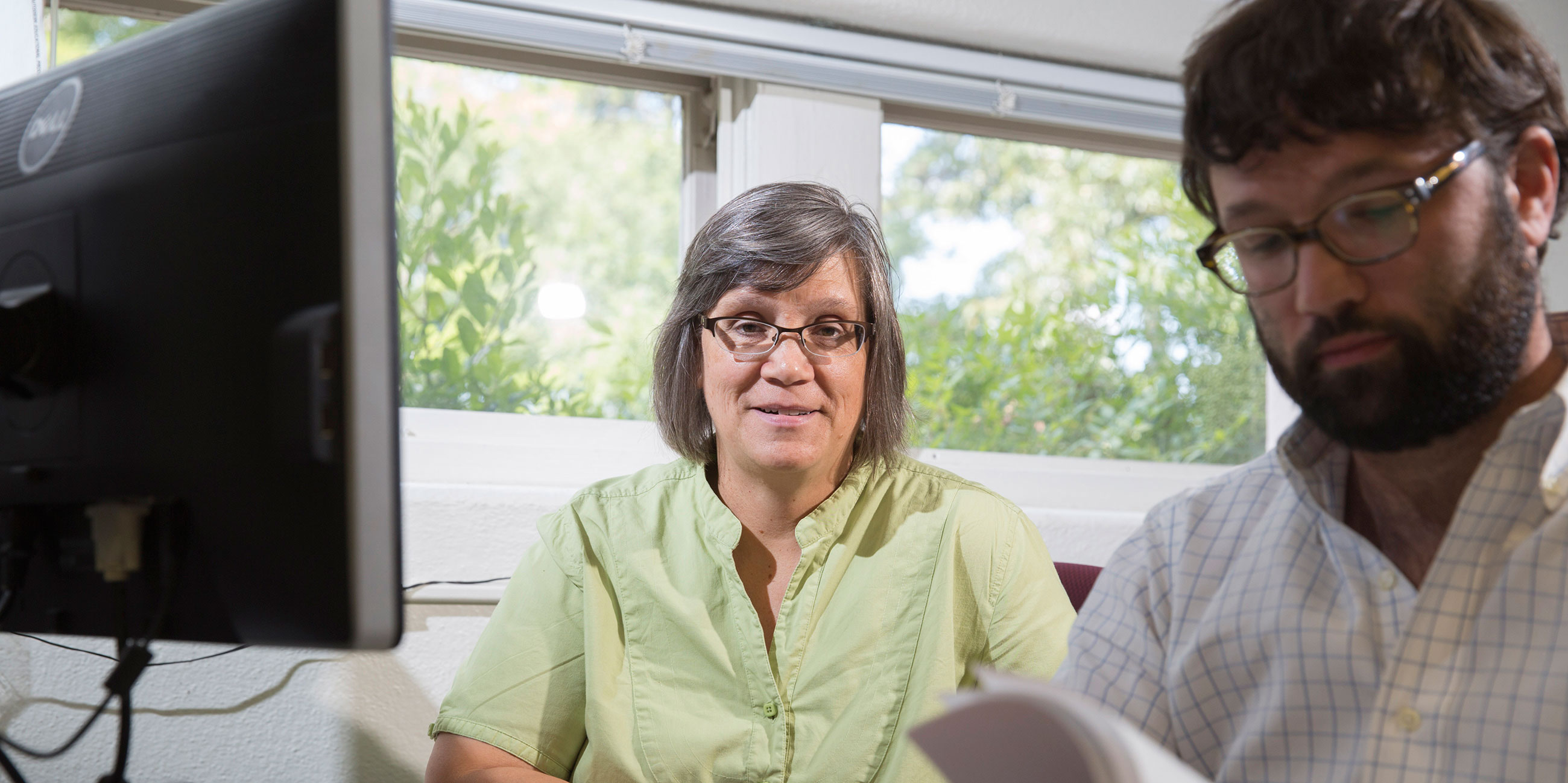Cari Goetcheus, an associate professor in the College of Environment and Design, tries to instill in her students the value of giving back to the community within which they will live.
Where did you earn degrees and what are your current responsibilities at UGA?
I received an associate in applied science degree from the State University of New York-Cobleskill, emphasizing landscape design, horticulture, soils, bugs, etc.; a bachelor of landscape architecture and environmental planning degree from Utah State University; and a master of historic preservation degree from the University of Georgia. All of this training has led to a specialization in cultural landscape management—combining history, ecology, design, planning and management. My current responsibilities include teaching graduate courses in historic preservation, advising thesis students and managing the UGA-CED Cultural Landscape Laboratory (http://www.ced.uga.edu/public-service/cultural-landscape-laboratory/).
When did you come to UGA and what brought you here?
The first time I came to Athens was as a graduate historic preservation student in the early 1990s. I chose UGA because the then School of Environmental Design had a collection of faculty who were national and international experts in the emerging field of cultural landscapes, and I wanted to learn from them. After 20 years of experience in the private, public and academic sectors, I returned to Athens in fall 2010 to teach and manage the Cultural Landscape Lab, essentially continuing the tradition of the CED being a leader in cultural landscape training.
What are your favorite courses and why?
Two courses that I enjoy teaching are “Rural Preservation” and “Cultural Resource Assessment.” I am passionate about the conservation and preservation of the built environment and the full breadth of cultures that crafted them, and these courses introduce natural and cultural resource conservation theory and practice.
What interests you about your field?
By observing and studying the physical environment of a place (the ecosystem, buildings, land uses, fence lines, rows of trees, formal gardens, vernacular yards, orchards, etc.), you can begin to “read” clues about how a place has been manipulated over time, which makes history come alive. Beyond knowing those aspects on an individual research level, through planning, design and management, those clues can be revealed to the public through various means of interpretation for a more comprehensive understanding of a historic site.
What are some highlights of your career at UGA?
Based on the groundwork laid by colleagues Eric MacDonald, CED Dean Dan Nadenicek and others, the UGA College of Environment and Design’s Cultural Landscape Lab has established numerous partnerships to assist organizations with the long-term management of significant cultural landscapes such as the 2,000-acre Stratford Hall, boyhood home of Robert E. Lee; Wormsloe, the Savannah plantation of the first surveyor in Georgia, Noble Jones; and Cobb County, location of an intact Piedmont Farm from the late 1800s. While I’ve managed the CLL, these partnerships have continued and additional grants have provided opportunities for students to work on projects at the Blue Ridge Parkway, Fort Sumter National Historic Monument, Cowpens National Battlefield, Kings Mountain National Battlefield and several national seashores. I’ve also been pleased to add cultural landscape-specific courses to the historic preservation graduate curriculum, many of which are open to students across campus.
How does your research or scholarship inspire your teaching, and vice versa?
My teaching pedagogy emphasizes student access to real-world projects so that students can gain experience interacting with historic sites and the people/organizations who manage them. As much of the CLL research emphasizes nationally significant historic sites, I try to craft class exercises that take advantage of access to those sites, while allowing the students to explore new approaches to problem solving.
What do you hope students gain from their classroom experience with you?
At a minimum, I hope that students gain insight into the importance of conserving cultural landscapes as historic resources—not just historic buildings. Further, I hope that each class period at least one student leaves class thinking, “Geez, that class really made me think today.”
Describe your ideal student.
My ideal student is one who is not afraid of asking questions—and has done the readings so there can be a lively discussion in class!
Favorite place to be/thing to do on campus is…
I really like walking around this beautiful campus, North Campus especially. There are so many great nooks and crannies to explore everywhere.
Beyond the UGA campus, I like to…
… take “blue highway” road trips, attend antique auctions and listen to all kinds of live music. This past summer, I did a road trip to the Mississippi Delta in search of the blues—heard some great music, met some funky folks and had a great time. As I enjoy music, dance and the arts, Athens, and the South in general, are great places to explore.
Community/civic involvement includes…
I try to instill in my students the value of giving back to the community within which they will live. Currently, I am partnering with the Athens-Clarke Heritage Foundation and Athens-Clarke County to document Beech Haven, a greenspace recently purchased by the county government along the Middle Oconee River that has a vernacular arts and crafts house and numerous unique cultural landscape features and heirloom bulbs.
Favorite book/movie (and why)?
One of my favorite movies is “It’s a Wonderful Life” with Jimmy Stewart. I appreciate it simply because it is a testament to the everyday moments that make up a life.
Originally published on Aug. 24, 2014


